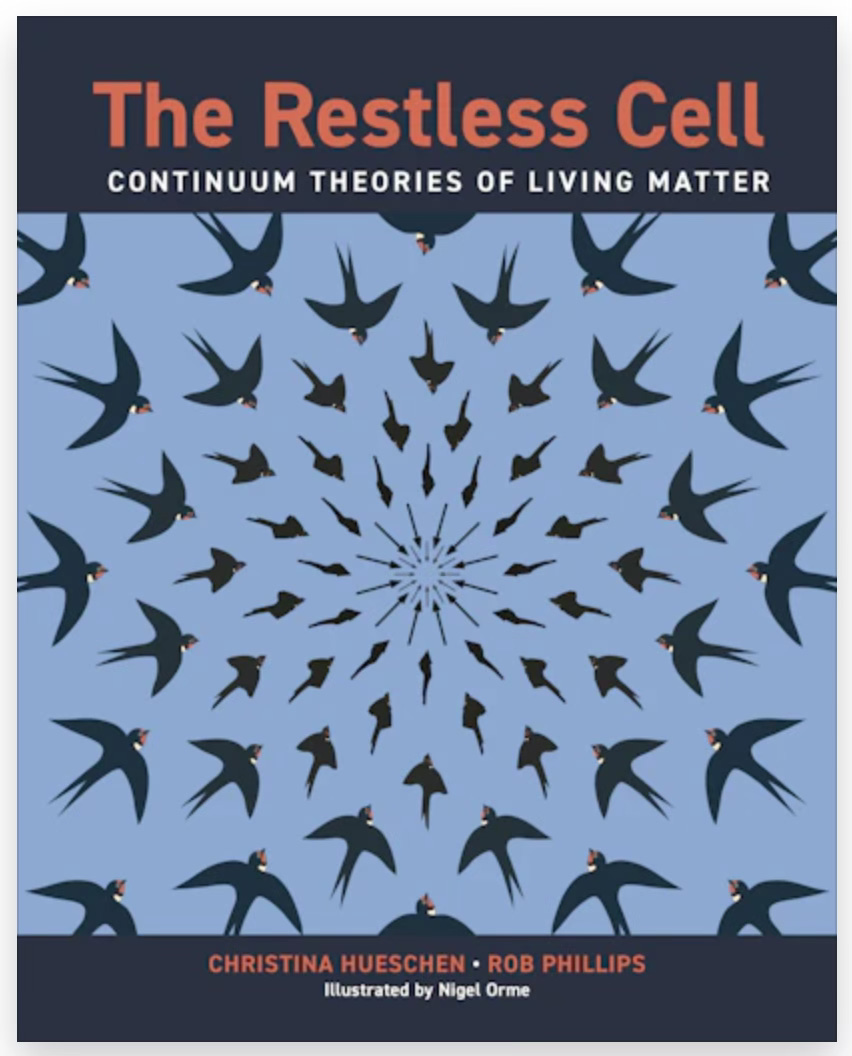Evolution, Information, Complexity, Field Theory: Three New Books
A quick plug for three brand new books that are on my desk.
I love to get book recommendations from actual people. Compared to browsing bookstores, reading the NYT Book review, or looking at ‘Similar items’ on Amazon, I get a much, much better hit rate when I read books based on someone’s individual recommendation, coming either in person or from someone I follow online. So when I find something good, I like to pass it on. Here are three hefty, technical books on some hot, big-picture topics in biology that I recently picked up, thanks to some great recommendations. I’ve just started these, so consider what follows second-hand recommendations.
The Evolution of Biological Information, Christoph Adami
Just out from Princeton University Press, at first glance this sounds like the kind of book that I avoid. Much of the writing on biological evolution and information I find vague and dissatisfying, because it fails to make contact with the real biology that we study in the lab or in the field. But Christoph Adami, who is part of a really excellent community of evolutionary biologists and microbial geneticists at Michigan State, has written a book that brings the mathematical apparatus evolution and information theory to bear on concrete biological applications, from the evolution to drug resistance to one of my personal favorites, the information content of regulatory DNA.
I learned about this from the always-interesting UC Berkeley biologist, Vince Buffalo, who reviewed the book for the BioScience. Adami also appeared on Sean Carroll’s Mindscape podcast. (It was an episode that I missed, otherwise I would have known of the book sooner.)
Evolutionary Cell Biology, Michael Lynch
Next up is a long-awaited tome by the influential Michael Lynch (Arizona State University), whose classic textbook, Genetics and Analysis of Quantitative Traits I picked up a long time ago when I was ending my graduate work in a Biochemistry & Biophysics department and moving to a Genetics department. Lynch has for decades focused on bringing an evolutionary perspective to molecular and cell biology, a perspective which is too often missing among biomedical scientists who work out a lot of the molecular details of cellular pathways. Lynch’s 2007 book, The Origins of Genome Architecture explored how genomes came to be the way they are. His latest book has been in the works for awhile, and my colleague and friend Joe Corbo first told me about the online, work-in-progress version. The whole thing is out now from Oxford University Press. Using an evolutionary lens, Lynch covers cell growth and division, cell senescence, protein complexes, transcription, metabolism, etc. — all of the sorts of things your average biomedical bench scientist is interested in.
The Restless Cell: Continuum Theories of Living Matter, Christina Hueschen and Rob Phillips
My favorite science was always physics, but I chose a career in biology because I want to understand how life emerges from non-living physical components. It’s the same question that interested Schrödinger when he wrote his 1940’s classic, What is Life? How do all of the structures and pathways of the cell hang together, when proteins, lipids, nucleic acids, sugars, and metabolites aren’t animated by some mysterious living force, but are rather just moving around according to the laws of thermodynamics?
A central as this question may seem, it’s not addressed very often. Biologists spend a lot of time working out what the components of the cell are and who they interact with. And biophysicists focus on the physical behavior of individual macromolecules or complexes, or, more recently, intracellular condensates. But what are the physical driving forces that allow an entire signaling pathway to function coherently within the crowded stew of the cell? There aren’t great answers out there. Rob Phillips has been going after questions like this for a long time. In this work, Hueschen (UC San Diego) and Phillips (Caltech) give an introduction to field theories, central to modern physics, and then apply them to biological matter. I haven’t yet read the book and so I can’t offer an opinion, but it looks like a provocative and informative read.




